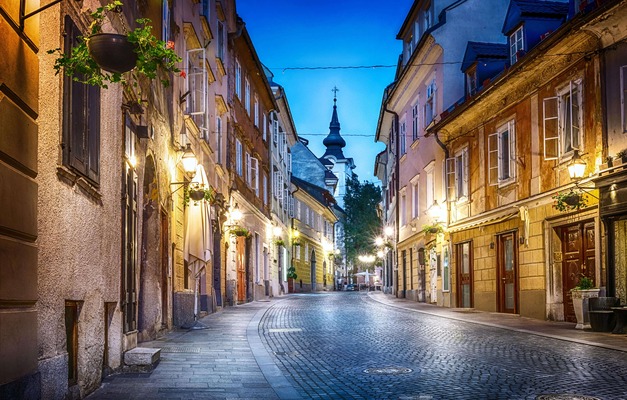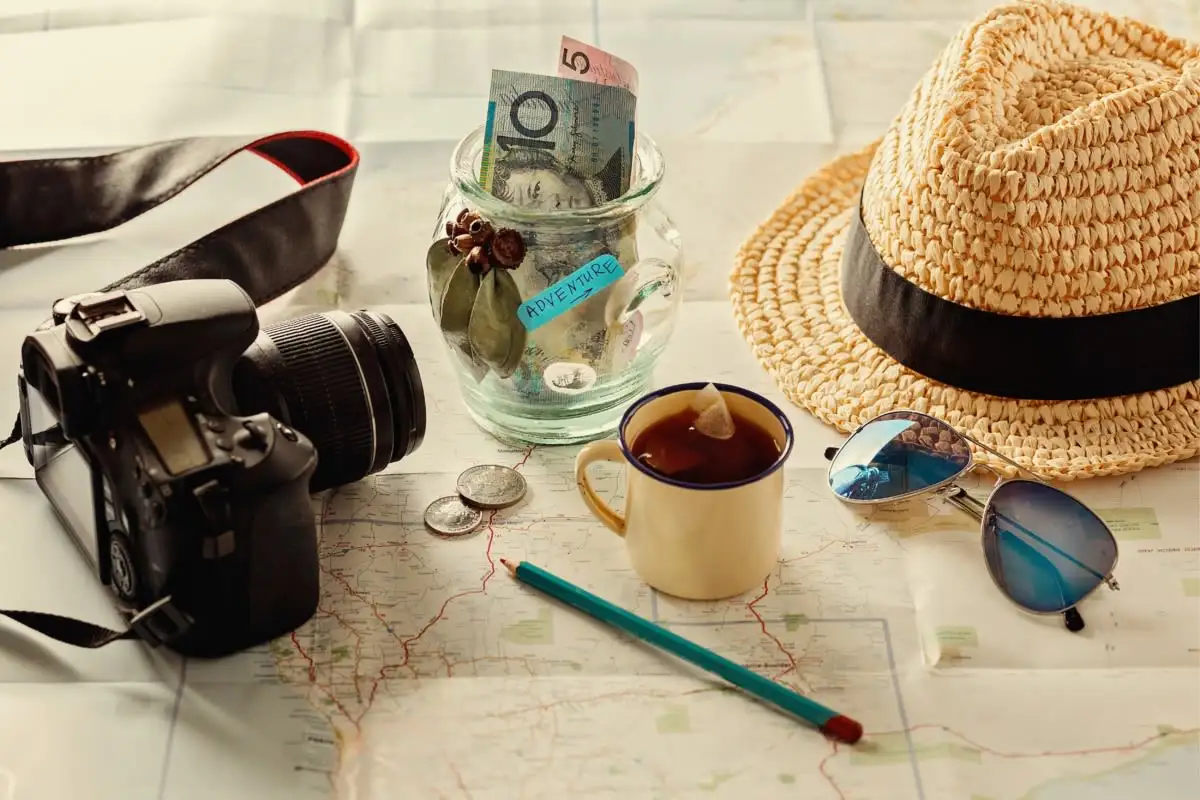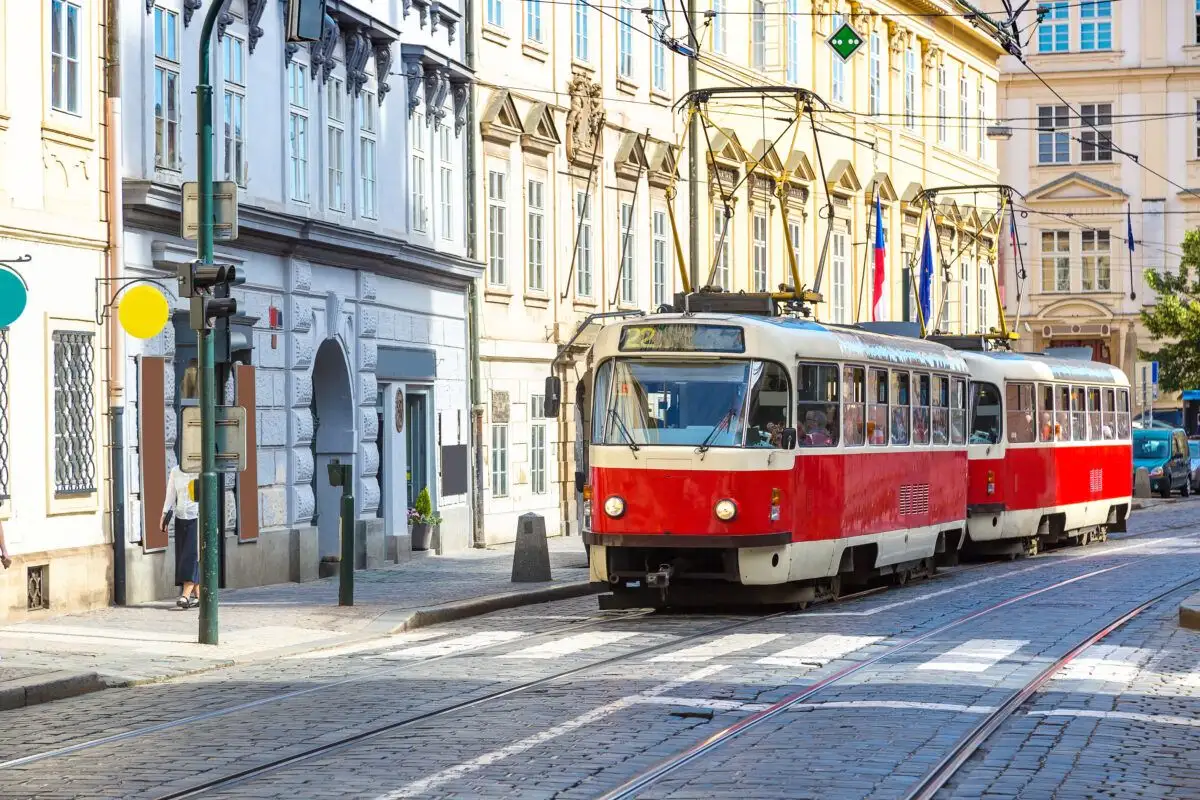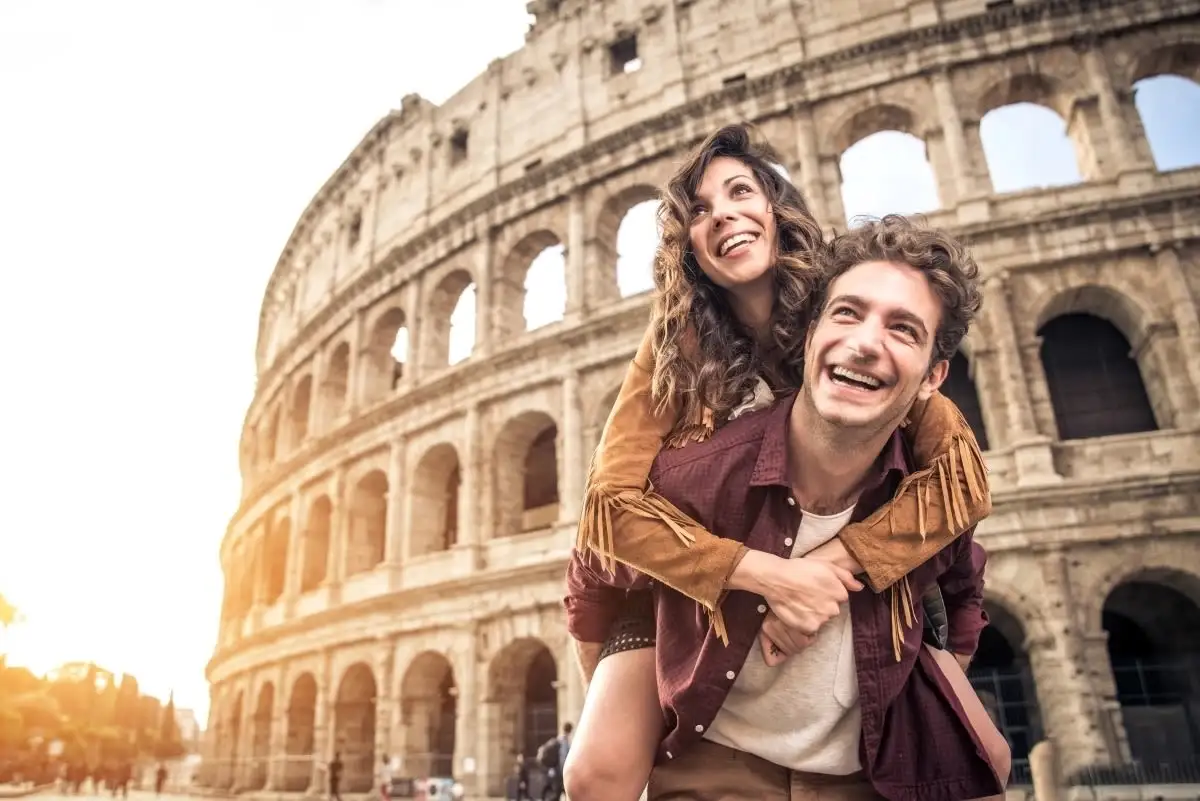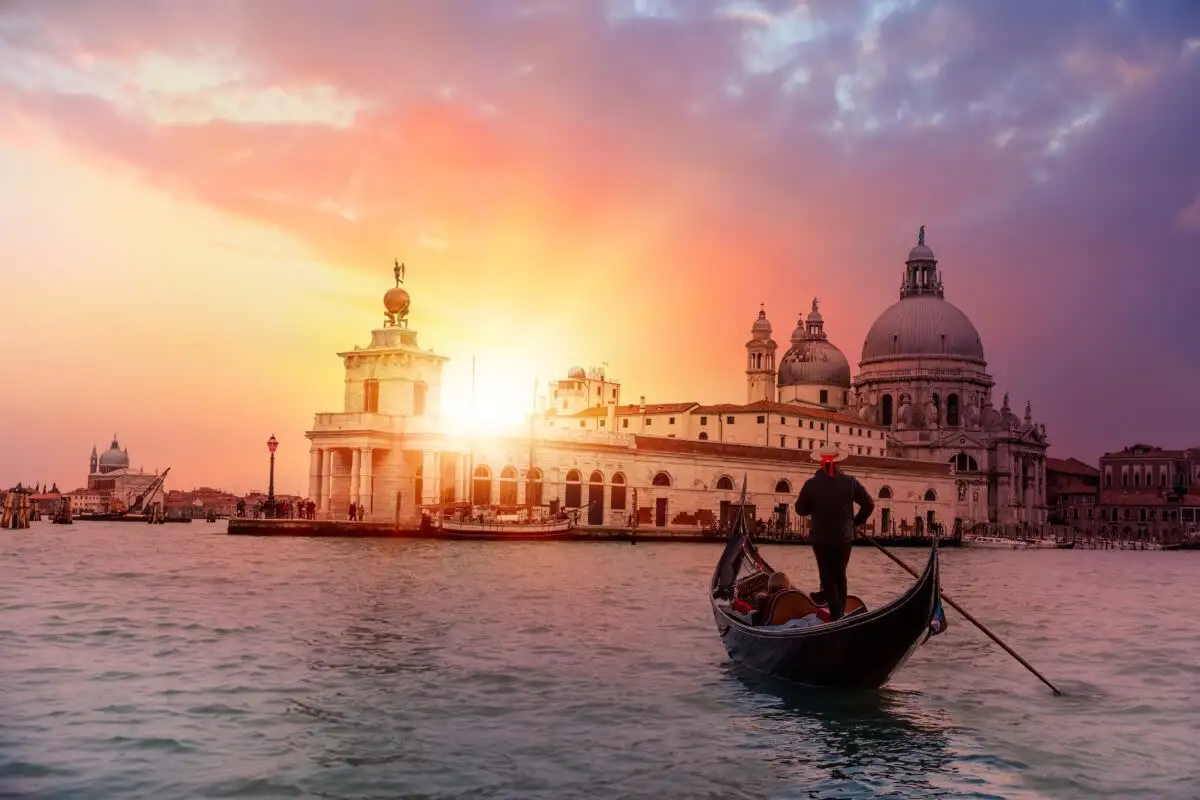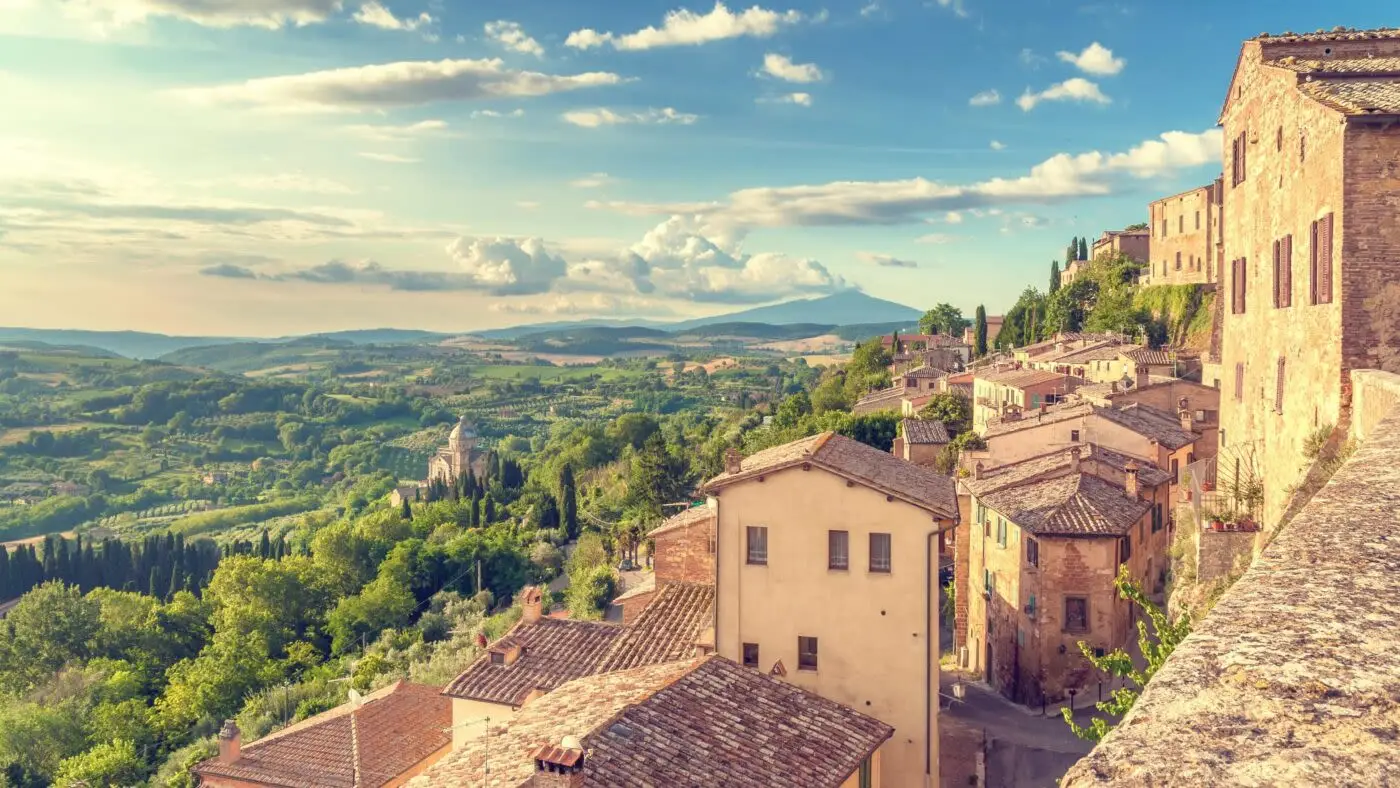
The Flavors and Culture of Venice: An Escape to the Floating City
 4 Day Tour of Venice
4 Day Tour of Venice
Overview
Trip Map
Itinerary
Inclusions
Reviews
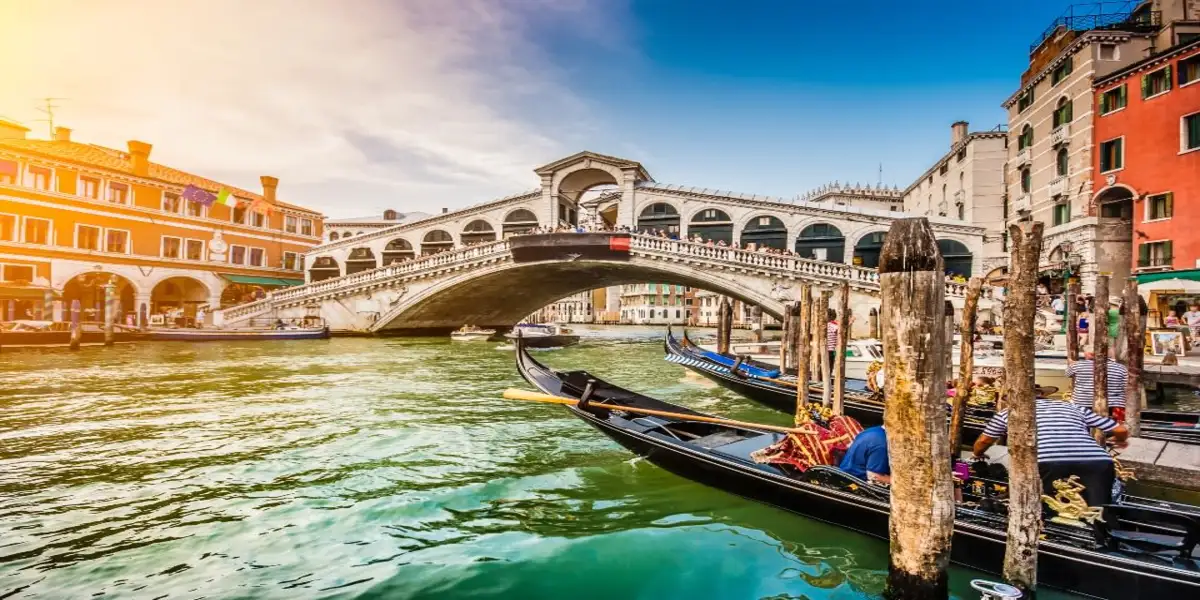
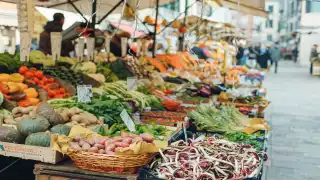
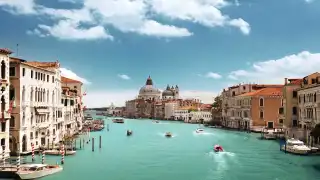




4 Days 3 Nights
Best Time: Jan-Dec
Cultural Exploration
Local Cuisine & Wine
Discover the beating heart of Venice on this captivating 4-day journey. You’ll get hands-on with Venetian cuisine during a private cooking class led by a local chef in their home, and stroll across the Rialto Bridge to the lively food markets of San Polo. You’ll also glide through the canals on a private gondola ride, take in stunning views of Gothic and Byzantine architecture, and wander beneath St. Mark's Basilica and the Doge's Palace on Piazza San Marco. Experience the best of Venetian culture, architecture, and cuisine with personalized guided tours and in-depth travel guidance through our mobile app, ensuring a seamlessly perfect trip.
- Enjoy a private gondola ride through the serene canals and past Venice's palatial facades.
- Tour the awe-inspiring Piazza San Marco, exploring its Gothic and Byzantine wonders.
- Explore the bustling Rialto Market and the charming San Polo district.
- Savor authentic Venetian cuisine in a private cooking class led by a local chef.
- Discover world-class art and beautiful views along Dorsoduro's scenic waterfront.
Discover the beating heart of Venice on this captivating 4-day journey. You’ll get hands-on with Venetian cuisine during a private cooking class led by a local chef in their home, and stroll across the Rialto Bridge to the lively food markets of San Polo. You’ll also glide through the canals on a private gondola ride, take in stunning views of Gothic and Byzantine architecture, and wander beneath St. Mark's Basilica and the Doge's Palace on Piazza San Marco. Experience the best of Venetian culture, architecture, and cuisine with personalized guided tours and in-depth travel guidance through our mobile app, ensuring a seamlessly perfect trip.
- Enjoy a private gondola ride through the serene canals and past Venice's palatial facades.
- Tour the awe-inspiring Piazza San Marco, exploring its Gothic and Byzantine wonders.
- Explore the bustling Rialto Market and the charming San Polo district.
- Savor authentic Venetian cuisine in a private cooking class led by a local chef.
- Discover world-class art and beautiful views along Dorsoduro's scenic waterfront.

Grand Canal
European History

Saint Mark's Basilica
Architecture

Rialto Bridge
Architecture

Gallerie dell'Academia
Museums & Galleries

Islands of Murano & Burano
Cultural
Must see sights

Grand Canal
European History

Saint Mark's Basilica
Architecture

Rialto Bridge
Architecture

Gallerie dell'Academia
Museums & Galleries

Islands of Murano & Burano
Cultural
Starting from
$1295
per person
 Not included
Not included Secure Your Customizable Trip
Enter your details to embark on a journey that can be tailored just for you.
Start
Travelers
0 travelers
Add Room
Remove Room
Preferred Hotel Stars
Select Hotel Stars
Craft Your Own Itinerary
Select your interests and destinations for a trip plan inspired by you.
Venice in Four Days Trip - Map & Itinerary
Enable/Disable Map Scrolling
Click To Make Map Interactive

Venice in Four Days Trip Timeline
 Edit Details
Edit DetailsArrival
3 nights
Venice
Italy
Departure
Day-By-Day Itinerary of Venice in Four Days Trip

Day 1
Arrive Venice
Day 1
Arrive Venice



To Be Determined
Transfer from Airport
There are two main airports in Venice. You will likely arrive at the main airport of Venice Marco Polo which is located 5 miles (8km) across the water from Venice. The water bus (i.e. the "vaparetto") picks up directly at the airport and delivers you to Venice. You'll find the docks just by following the signs and you can purchase a water bus ticket at the airport for 15 EUR. You can also book a private, and very expensive, water taxi directly to your hotel, or take a land taxi to Piazzale Roma near the Venice main train station. From there you can walk or catch a water bus to your hotel. Uber is not available in Venice. If you are arriving at the more distant Treviso Airport, you will need to take a shuttle bus or an expensive taxi (100 EUR) to Venice. The ATVO bus delivers you to the Piazzale Roma on Venice in 70 minutes. The Barzi Bus Service takes you to the Tronchetto docks in 40 minutes, but from there you must take a water taxi or water bus. Both cost 12 EUR.

Day 1
Arrive Venice


Day 1
Arrive Venice




To Be Determined:
Transfer from Airport
Mid-Day to Late Afternoon:
St Mark's Square
Late Afternoon:
The Grand Canal


Day 2
Venice
Day 2
Venice



Morning/Mid-Day
San Polo District
The graceful arch of the Rialto Bridge is perhaps the single most iconic sight in Venice since nearly everyone passes beneath it on their journey along the Grand Canal. It connects Venice's two most visited districts, San Marco and San Polo. While San Marco is famous for St. Mark's Square, San Polo more than holds its own as a must-see destination, as it contains some of the city's oldest neighborhoods and most picturesque canals and bridges. It is also home to some of the best restaurants in Venice, and admittedly some of its worst tourist traps as well. Among many highlights is the bustling Rialto Market, which was once one of medieval Europe's busiest financial and trade markets, and still does a brisk trade in fresh seafood and produce.

Frari Church
Step inside this inconspicuous Gothic 15th-century church to discover some of Venice's most famous tombs and artwork.
Show More

Scuola Grande di San Rocco
Visit this underrated art museum featuring works by the famed Renaissance artist Tintoretto.
Show More
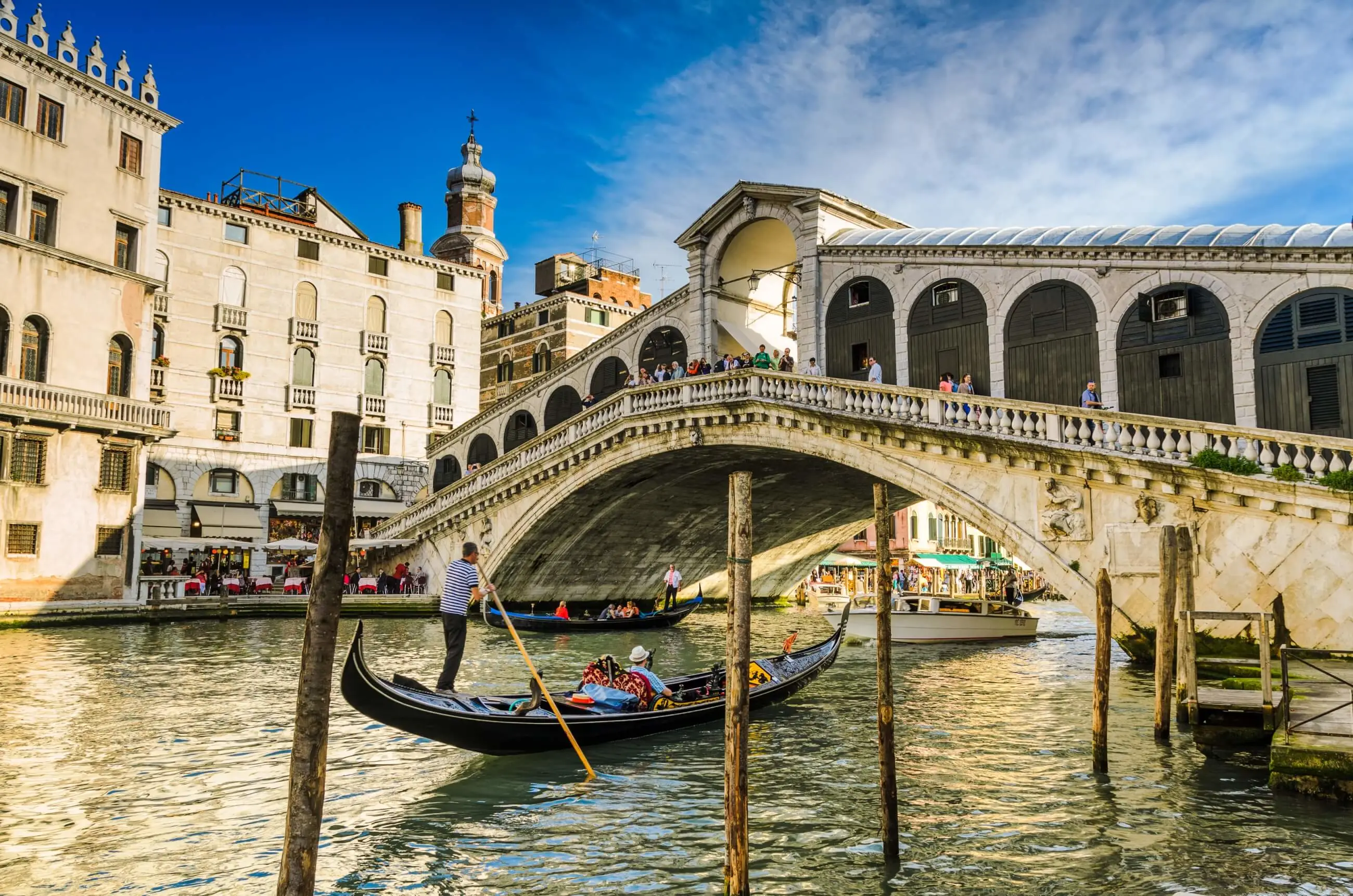
Rialto Bridge
Walk over or ride under the most famous bridge on the Grand Canal.
Show More
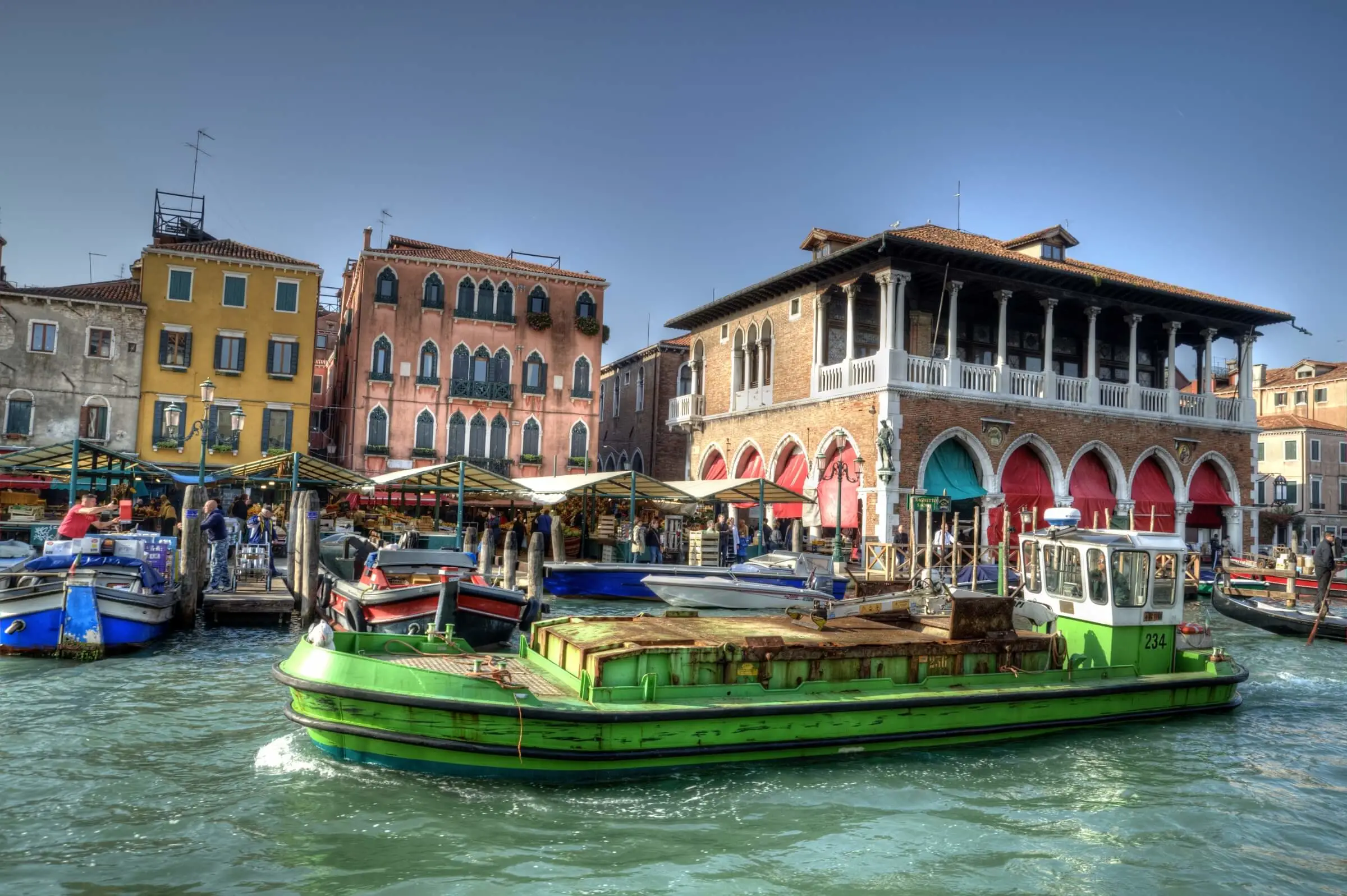
Rialto Markets
Experience the sights, tastes, and smells of Venice's historic "Pescaria" fish market, as well as the fresh produce market.
Show More

Frari Church
Step inside this inconspicuous Gothic 15th-century church to discover some of Venice's most famous tombs and artwork.
Show More

Scuola Grande di San Rocco
Visit this underrated art museum featuring works by the famed Renaissance artist Tintoretto.
Show More

Rialto Bridge
Walk over or ride under the most famous bridge on the Grand Canal.
Show More

Rialto Markets
Experience the sights, tastes, and smells of Venice's historic "Pescaria" fish market, as well as the fresh produce market.
Show More
prev
next

Day 2
Venice


Frari Church
 Highlight of San Polo District
Highlight of San Polo DistrictStep inside this inconspicuous Gothic 15th-century church to discover some of Venice's most famous tombs and artwork.
The relatively austere brick Gothic Church of Santa Maria Gloriosa dei Frari holds many surprises. It has the second tallest campanile in Venice after St Mark's, and contains numerous masterpieces of painting and sculpture by the likes of Titian, Bellini and Donatello, plus a number of important doges' tombs, as well as Titian's tomb. Titian's majestic painting of The Assumption in the sanctuary, with its dramatic movement and coloring, is the work that established Titian's reputation as one of the greatest of all Italian painters. Even if you feel you've seen too many churches already, this one is definitely worth visiting and we recommend investing in the audio guide to get the best out of your time here.

Scuola Grande di San Rocco
 Highlight of San Polo District
Highlight of San Polo DistrictVisit this underrated art museum featuring works by the famed Renaissance artist Tintoretto.
Next door to the Frari, one of the most magnificent of Venice's charitable associations, The Scuola Grande di San Rocco is one of the most magnificent of Venice's charitable associations. The building was completed in 1560, and Tintoretto won a competition held to select an artist to decorate the interior. Over the next 23 years, he executed an incomparable series of paintings that cover the walls and ceilings. According to the writer Jan Morris, "no collection of sacred pictures is more overwhelming of impact than the immense series of Tintorettos in the Scuola [...] - often dark, often grandiose, often incomprehensible, but culminating in the huge masterpiece of the Crucifixion, which Velazquez humbly copied, and before which, to this day, you may still see strong men moved to tears."

Rialto Bridge
 Highlight of San Polo District
Highlight of San Polo DistrictWalk over or ride under the most famous bridge on the Grand Canal.
The 16th-century Rialto Bridge is the most iconic bridge in Venice. With a width of other 75 feet (23m) and span of over 100 feet (31m), the wide stone footbridge crosses over the Grand Canal and connects the San Marco and San Polo districts. It stands on the spot of an earlier wooden drawbridge which collapsed under the weight of a crowd gathered on it to watch a wedding procession. It took almost 150 years before the current Rialto bridge was built, this time in stone, and thus still stands as a symbol of the city. Surrounded by tourist shops and pricey restaurants, it sits on 12,000 wooden pilings and will be forever immortalised in millions of photographs as the backdrop to the classic Venetian photo shot, which captures the city's gondolas as they ferry lovers around the Grand Canal. While for many a gondola ride is a must-do experience in Venice, it's also possible to admire the bridge on foot. For a less-pricey way of seeing it from the water, you can always take the Number 1 local Vaporetto (water bus) and see the bridge as you pass underneath.

Rialto Markets
 Highlight of San Polo District
Highlight of San Polo DistrictExperience the sights, tastes, and smells of Venice's historic "Pescaria" fish market, as well as the fresh produce market.
Located close to the Rialto Bridge stands the Rialto Market, "the incomparable fish market of Venice, a glorious wet, colorful, high-smelling concourse of the sea, to which in the down hours fleets of barges bring the day's supply of sea-foods" (Jan Morris). Established well before the bridge was built, Venice's iconic market is a sight to behold, with colourful vegetable stalls and loud market vendors touting for business. It is a great spot for photographs and of course for a taste of the freshly caught fish with a host of appetising snacks on offer. Adjacent to the fish market you'll find a produce market, which is also important for a city which demands fresh ingredients for its cuisine. Keep in mind that the markets close at 1pm, and both markets are closed on Sundays (the fish market is also closed on Mondays).

Frari Church
 Highlight of San Polo District
Highlight of San Polo DistrictStep inside this inconspicuous Gothic 15th-century church to discover some of Venice's most famous tombs and artwork.
The relatively austere brick Gothic Church of Santa Maria Gloriosa dei Frari holds many surprises. It has the second tallest campanile in Venice after St Mark's, and contains numerous masterpieces of painting and sculpture by the likes of Titian, Bellini and Donatello, plus a number of important doges' tombs, as well as Titian's tomb. Titian's majestic painting of The Assumption in the sanctuary, with its dramatic movement and coloring, is the work that established Titian's reputation as one of the greatest of all Italian painters. Even if you feel you've seen too many churches already, this one is definitely worth visiting and we recommend investing in the audio guide to get the best out of your time here.

Scuola Grande di San Rocco
 Highlight of San Polo District
Highlight of San Polo DistrictVisit this underrated art museum featuring works by the famed Renaissance artist Tintoretto.
Next door to the Frari, one of the most magnificent of Venice's charitable associations, The Scuola Grande di San Rocco is one of the most magnificent of Venice's charitable associations. The building was completed in 1560, and Tintoretto won a competition held to select an artist to decorate the interior. Over the next 23 years, he executed an incomparable series of paintings that cover the walls and ceilings. According to the writer Jan Morris, "no collection of sacred pictures is more overwhelming of impact than the immense series of Tintorettos in the Scuola [...] - often dark, often grandiose, often incomprehensible, but culminating in the huge masterpiece of the Crucifixion, which Velazquez humbly copied, and before which, to this day, you may still see strong men moved to tears."

Rialto Bridge
 Highlight of San Polo District
Highlight of San Polo DistrictWalk over or ride under the most famous bridge on the Grand Canal.
The 16th-century Rialto Bridge is the most iconic bridge in Venice. With a width of other 75 feet (23m) and span of over 100 feet (31m), the wide stone footbridge crosses over the Grand Canal and connects the San Marco and San Polo districts. It stands on the spot of an earlier wooden drawbridge which collapsed under the weight of a crowd gathered on it to watch a wedding procession. It took almost 150 years before the current Rialto bridge was built, this time in stone, and thus still stands as a symbol of the city. Surrounded by tourist shops and pricey restaurants, it sits on 12,000 wooden pilings and will be forever immortalised in millions of photographs as the backdrop to the classic Venetian photo shot, which captures the city's gondolas as they ferry lovers around the Grand Canal. While for many a gondola ride is a must-do experience in Venice, it's also possible to admire the bridge on foot. For a less-pricey way of seeing it from the water, you can always take the Number 1 local Vaporetto (water bus) and see the bridge as you pass underneath.

Rialto Markets
 Highlight of San Polo District
Highlight of San Polo DistrictExperience the sights, tastes, and smells of Venice's historic "Pescaria" fish market, as well as the fresh produce market.
Located close to the Rialto Bridge stands the Rialto Market, "the incomparable fish market of Venice, a glorious wet, colorful, high-smelling concourse of the sea, to which in the down hours fleets of barges bring the day's supply of sea-foods" (Jan Morris). Established well before the bridge was built, Venice's iconic market is a sight to behold, with colourful vegetable stalls and loud market vendors touting for business. It is a great spot for photographs and of course for a taste of the freshly caught fish with a host of appetising snacks on offer. Adjacent to the fish market you'll find a produce market, which is also important for a city which demands fresh ingredients for its cuisine. Keep in mind that the markets close at 1pm, and both markets are closed on Sundays (the fish market is also closed on Mondays).
prev
next


Day 3
Venice
Day 3
Venice



10:00 AM - 2:00 PM
Culinary Experience
Make your stay in Venice memorable, and indulge in delicious Venetian food and fruity Veneto wines! The goal of this four-hour guided tour is to provide a first-hand culinary experience and show you all the different processes used for several dishes, all under the supervision of a food expert who will be pleased to impart their knowledge to you in the comfort of a private home.

Day 3
Venice


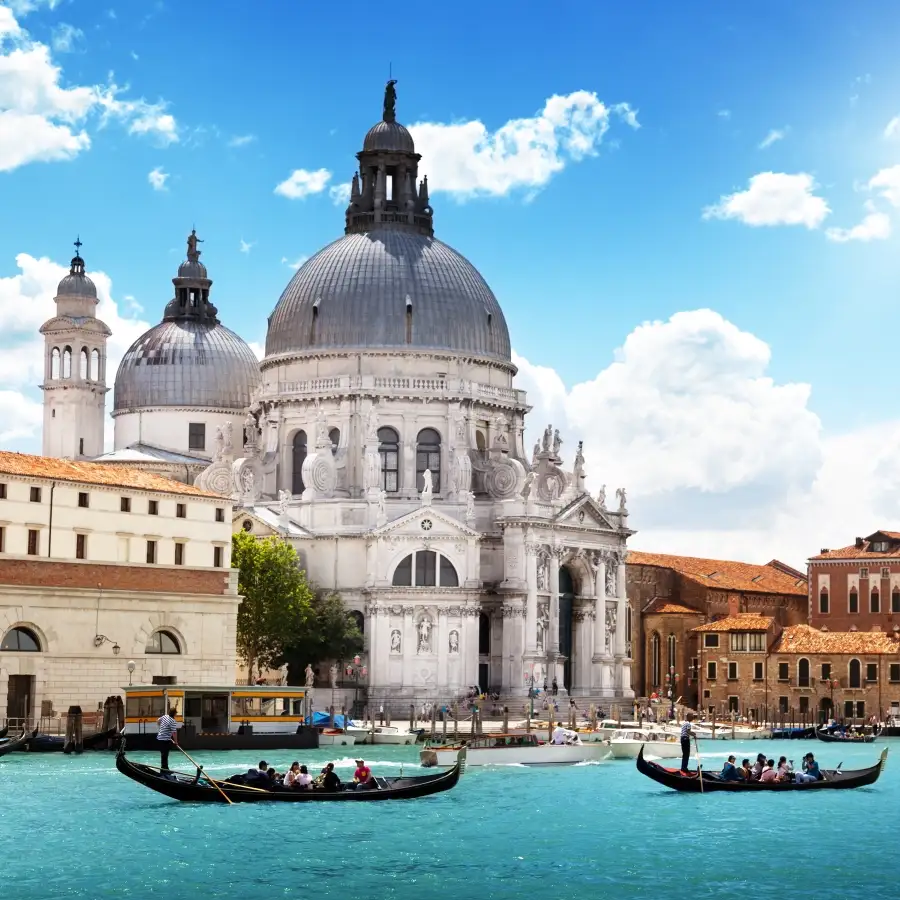
Day 4
Depart Venice
Day 4
Depart Venice



Morning/Mid-Day
The Dorsoduro District
Discover the less well-known sestiere (district) of Dorsoduro and visit its world-famous art collections at Gallerie dell'Academia, the Peggy Guggenheim Collection, and Cà Rezzonico. Once a haven for artists before rising rents drove them out, it is still a charming and unique district with many lively spots, such as the Campo Santa Margherita, one of Venice's largest squares. Be sure to take a walk along its enchanting waterfront promenade known as Zattere and explore the cafes along its canals.
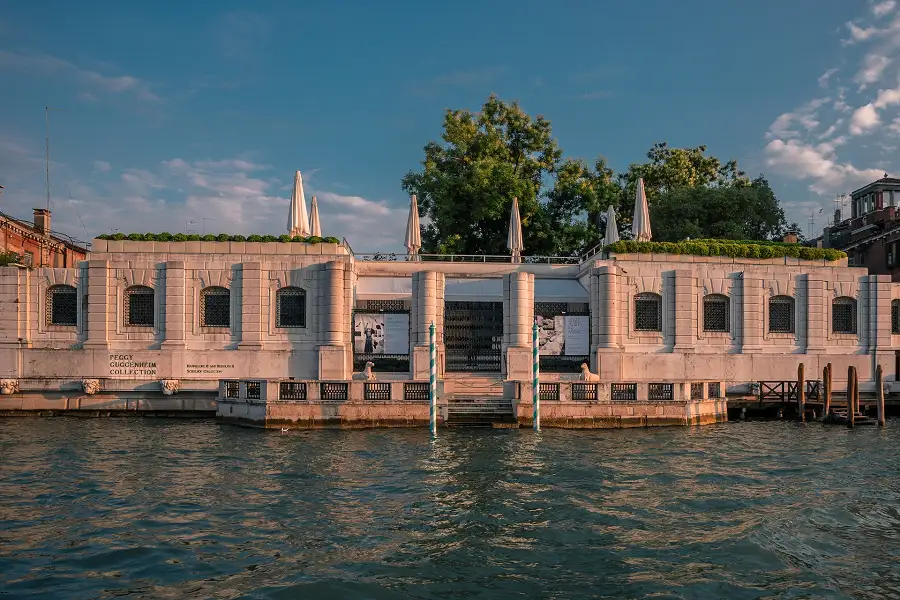
Peggy Guggenheim Collection
See the rich collection of 20th-century art inside one of Europe's most important museums.
Show More

Ca' Rezzonico
Acquaint yourself with Venetian art of the 18th century and get a taste of what it was like to live in a fabulously ornate palace.
Show More

Ponte dell'Accademia
Catch the iconic photo of the Grand Canal from the this attractive wood and metal bridge.
Show More

Gallerie Dell'Accademia
See the incredible masterpieces held within Venice's most renowned art gallery.
Show More
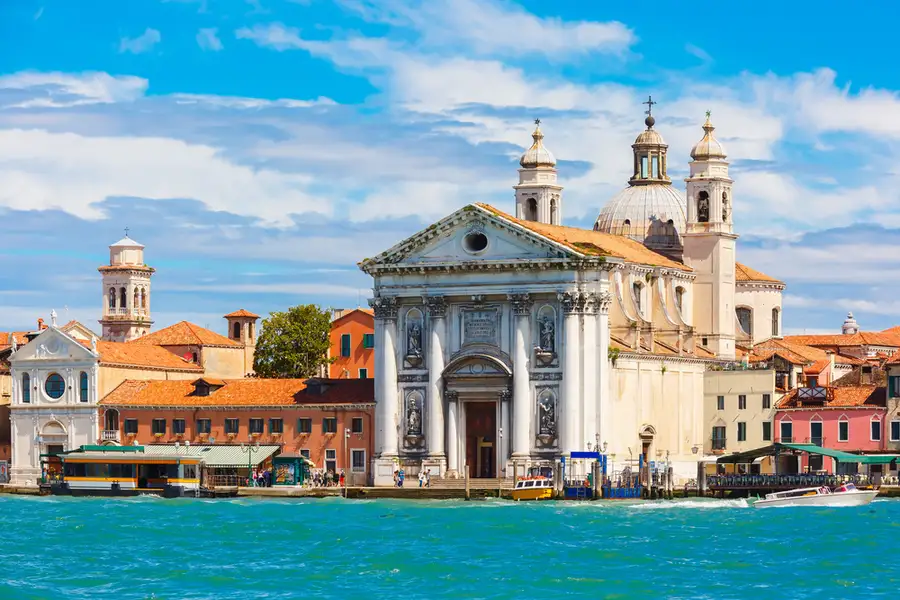
The Gesuati
Watch the sun set from the steps of this beautifully decorated 18th-century church.
Show More

Peggy Guggenheim Collection
See the rich collection of 20th-century art inside one of Europe's most important museums.
Show More

Ca' Rezzonico
Acquaint yourself with Venetian art of the 18th century and get a taste of what it was like to live in a fabulously ornate palace.
Show More

Ponte dell'Accademia
Catch the iconic photo of the Grand Canal from the this attractive wood and metal bridge.
Show More

Gallerie Dell'Accademia
See the incredible masterpieces held within Venice's most renowned art gallery.
Show More

The Gesuati
Watch the sun set from the steps of this beautifully decorated 18th-century church.
Show More

Peggy Guggenheim Collection
See the rich collection of 20th-century art inside one of Europe's most important museums.
Show More
prev
next

Day 4
Depart Venice


Peggy Guggenheim Collection
 Highlight of The Dorsoduro District
Highlight of The Dorsoduro DistrictSee the rich collection of 20th-century art inside one of Europe's most important museums.
The Peggy Guggenheim Museum is one of the top sights in Venice, not just for art lovers. Housed in the Palazzo Venier dei Leoni, this was the former residence of the flamboyant copper heiress Peggy Guggenheim from 1949 until her death 30 years later. It houses masterpieces ranging from Cubism and Surrealism to Abstract Expressionism from artists such as Magritte, Picasso, Ernst and Miro.

Ca' Rezzonico
 Highlight of The Dorsoduro District
Highlight of The Dorsoduro DistrictAcquaint yourself with Venetian art of the 18th century and get a taste of what it was like to live in a fabulously ornate palace.
Ca' Rezzonico is one of the most important 17th-18th-century palaces in Venice, abd it now houses the Museo del Settecento Veneziano, the city's collection of 18th-century art. Apart from some wonderful paintings by Tiepolo in addition to his ceiling frescoes, the museum also contains Venetian scenes painted by the brilliant landscape artist, Canaletto. Of course it is not just the art hanging on the walls that visitors come for, but the artistry of the building itself. The beautifully decorated interior, including colorful frescoes and ornate marble staircases, is well worth seeing in its own right.

Ponte dell'Accademia
 Highlight of The Dorsoduro District
Highlight of The Dorsoduro DistrictCatch the iconic photo of the Grand Canal from the this attractive wood and metal bridge.
As one of only four bridges to span the Grand Canal, the Ponte dell'Accademia bridge, located right next to the Gallerie Dell'Accademia, is an important pedestrian thoroughfare and a popular spot for taking the iconic Grand Canal photograph.

Gallerie Dell'Accademia
 Highlight of The Dorsoduro District
Highlight of The Dorsoduro DistrictSee the incredible masterpieces held within Venice's most renowned art gallery.
Filled with some of the very best 13th- to 18th-century Venetian artwork, this is one of the most important art galleries in Italy. Here you can see masterpieces by Giovanni Bellini, Carpaccio, Titian, Tintoretto, Veronese, and Giambattista Tiepolo. There are too many masterpieces to list here, but if time allows you should definitely rent the audioguide and spend some serious time acquainting yourself with Venice's glorious art heritage. The galleries occupy the former church and convent of Santa Maria della Carità and the adjoining Scuola Grande della Carità, which was the oldest of the six "scuole grandi" – lay confraternities dedicated to charitable works. Dating back to 1343 AD, the Carità was mostly destroyed by fire, but two of its richly decorated rooms can still be seen. The other scuole grandi were also important art patrons and collectors, and many of their greatest works have also ended up in the Accademia.

The Gesuati
 Highlight of The Dorsoduro District
Highlight of The Dorsoduro DistrictWatch the sun set from the steps of this beautifully decorated 18th-century church.
The Church of Gesuati, or Santa Maria del Rosario, sits directly on the large Giudecca Canal and its steps are a favorite spot to catch the last of the sun's rays. Located on the waterfront area known as the Zattere, its a lively scene with several vaporetto stops and many nearby al fresco cafes. The interior gives you a good opportunity to acquaint yourself with the best known and successful of Venice's 18th-century painters, Giambattista Tiepolo, who frescoed the ceiling and painted the scene on the first south altar. Almost all its sculpture and paintings were created within a thirty-year period, making it an excellent time capsule of the mid-1700's. Construction began in 1725, the church was consecrated in 1743, and the last sculptural decoration was in place by 1755. Its highlight is the preserved ceiling paintings and the four large sculptures on the exterior facade, that represent Prudence, Justice, Fortitude and Temperance.

Peggy Guggenheim Collection
 Highlight of The Dorsoduro District
Highlight of The Dorsoduro DistrictSee the rich collection of 20th-century art inside one of Europe's most important museums.
The Peggy Guggenheim Museum is one of the top sights in Venice, not just for art lovers. Housed in the Palazzo Venier dei Leoni, this was the former residence of the flamboyant copper heiress Peggy Guggenheim from 1949 until her death 30 years later. It houses masterpieces ranging from Cubism and Surrealism to Abstract Expressionism from artists such as Magritte, Picasso, Ernst and Miro.

Ca' Rezzonico
 Highlight of The Dorsoduro District
Highlight of The Dorsoduro DistrictAcquaint yourself with Venetian art of the 18th century and get a taste of what it was like to live in a fabulously ornate palace.
Ca' Rezzonico is one of the most important 17th-18th-century palaces in Venice, abd it now houses the Museo del Settecento Veneziano, the city's collection of 18th-century art. Apart from some wonderful paintings by Tiepolo in addition to his ceiling frescoes, the museum also contains Venetian scenes painted by the brilliant landscape artist, Canaletto. Of course it is not just the art hanging on the walls that visitors come for, but the artistry of the building itself. The beautifully decorated interior, including colorful frescoes and ornate marble staircases, is well worth seeing in its own right.

Ponte dell'Accademia
 Highlight of The Dorsoduro District
Highlight of The Dorsoduro DistrictCatch the iconic photo of the Grand Canal from the this attractive wood and metal bridge.
As one of only four bridges to span the Grand Canal, the Ponte dell'Accademia bridge, located right next to the Gallerie Dell'Accademia, is an important pedestrian thoroughfare and a popular spot for taking the iconic Grand Canal photograph.

Gallerie Dell'Accademia
 Highlight of The Dorsoduro District
Highlight of The Dorsoduro DistrictSee the incredible masterpieces held within Venice's most renowned art gallery.
Filled with some of the very best 13th- to 18th-century Venetian artwork, this is one of the most important art galleries in Italy. Here you can see masterpieces by Giovanni Bellini, Carpaccio, Titian, Tintoretto, Veronese, and Giambattista Tiepolo. There are too many masterpieces to list here, but if time allows you should definitely rent the audioguide and spend some serious time acquainting yourself with Venice's glorious art heritage. The galleries occupy the former church and convent of Santa Maria della Carità and the adjoining Scuola Grande della Carità, which was the oldest of the six "scuole grandi" – lay confraternities dedicated to charitable works. Dating back to 1343 AD, the Carità was mostly destroyed by fire, but two of its richly decorated rooms can still be seen. The other scuole grandi were also important art patrons and collectors, and many of their greatest works have also ended up in the Accademia.

The Gesuati
 Highlight of The Dorsoduro District
Highlight of The Dorsoduro DistrictWatch the sun set from the steps of this beautifully decorated 18th-century church.
The Church of Gesuati, or Santa Maria del Rosario, sits directly on the large Giudecca Canal and its steps are a favorite spot to catch the last of the sun's rays. Located on the waterfront area known as the Zattere, its a lively scene with several vaporetto stops and many nearby al fresco cafes. The interior gives you a good opportunity to acquaint yourself with the best known and successful of Venice's 18th-century painters, Giambattista Tiepolo, who frescoed the ceiling and painted the scene on the first south altar. Almost all its sculpture and paintings were created within a thirty-year period, making it an excellent time capsule of the mid-1700's. Construction began in 1725, the church was consecrated in 1743, and the last sculptural decoration was in place by 1755. Its highlight is the preserved ceiling paintings and the four large sculptures on the exterior facade, that represent Prudence, Justice, Fortitude and Temperance.

Peggy Guggenheim Collection
 Highlight of The Dorsoduro District
Highlight of The Dorsoduro DistrictSee the rich collection of 20th-century art inside one of Europe's most important museums.
The Peggy Guggenheim Museum is one of the top sights in Venice, not just for art lovers. Housed in the Palazzo Venier dei Leoni, this was the former residence of the flamboyant copper heiress Peggy Guggenheim from 1949 until her death 30 years later. It houses masterpieces ranging from Cubism and Surrealism to Abstract Expressionism from artists such as Magritte, Picasso, Ernst and Miro.
prev
next

What's Included In Venice in Four Days Trip

Pre-Paid Tours and Activities:
- 'First Walk' Guided Tour in Venice
- Private Gondola Ride

Go Real Travel Mobile App:
- Itinerary Plan & Reservations Info
- Points of Interest
- Detailed Travel Information
- Maps & Directions
Other Trips You May Like
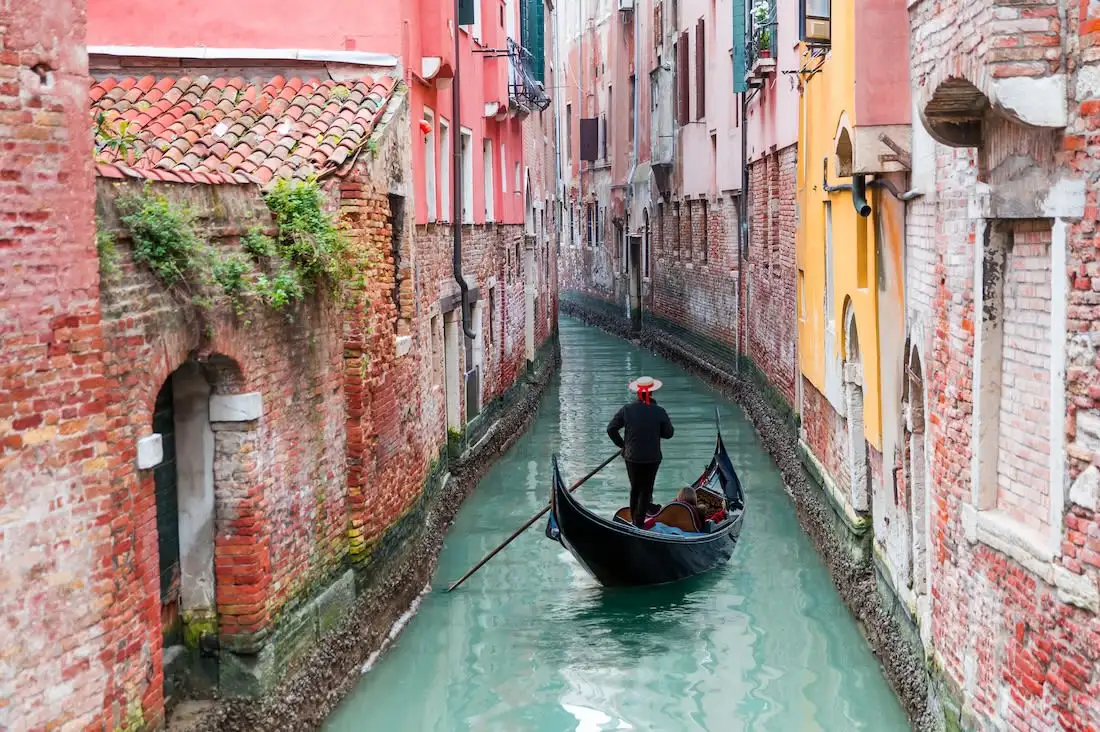
8 Days
From$2424USD

12 Days
From$3129USD
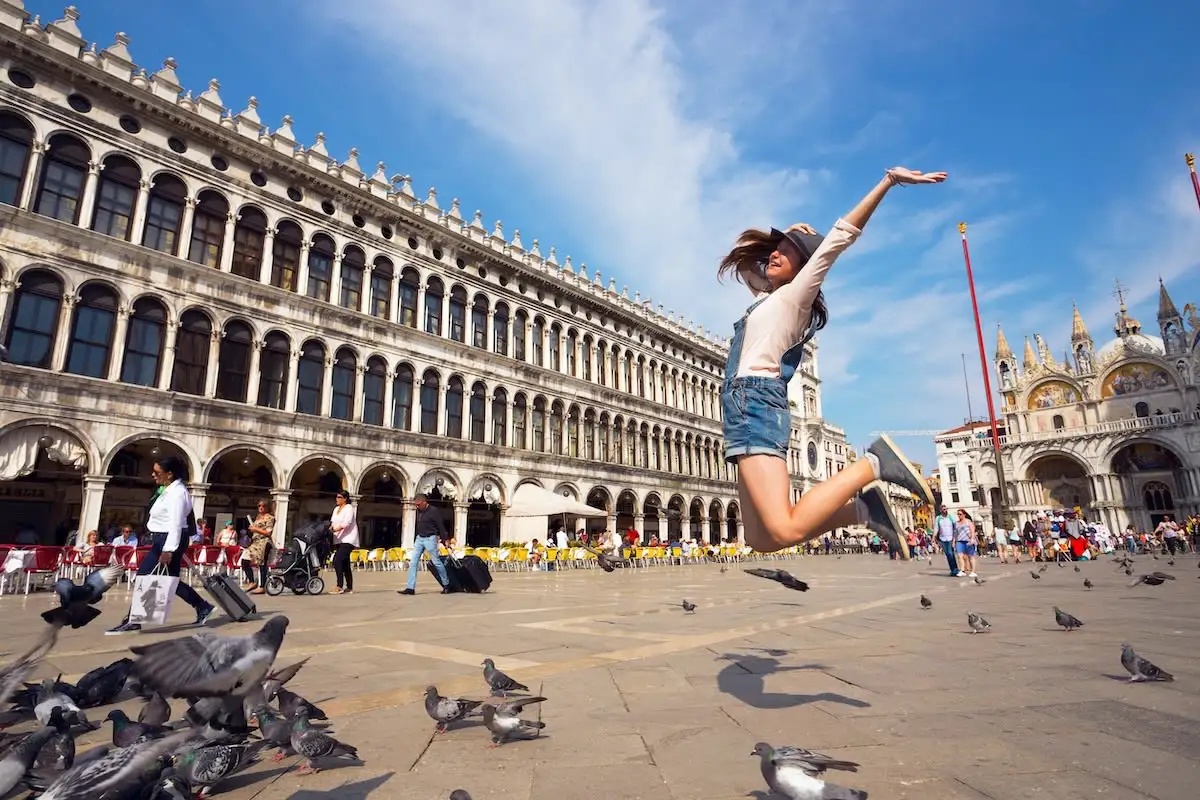
10 Days
From$2600USD

12 Days
From$3175USD

5 Days
From$1299USD
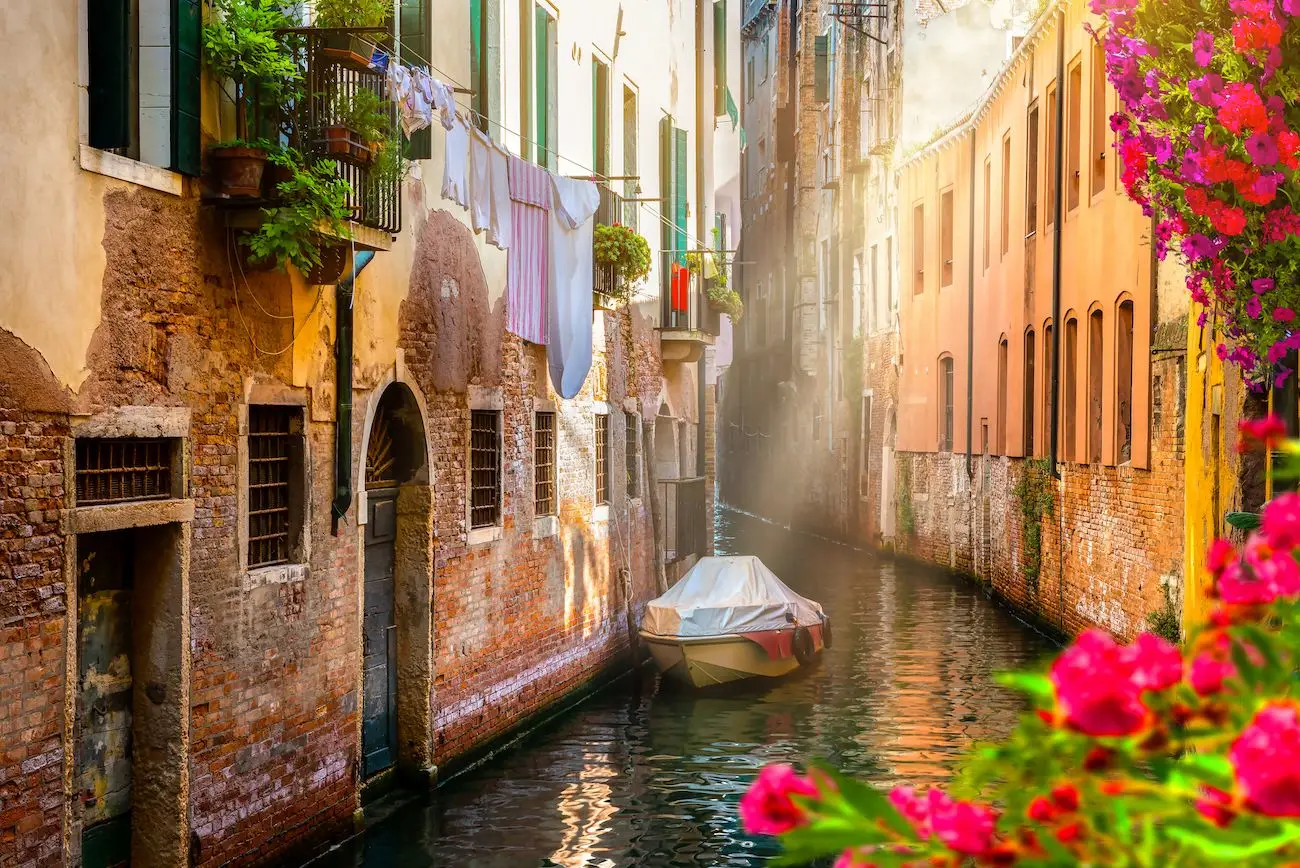
7 Days
From$2593USD

7 Days
From$2139USD

14 Days
From$3559USD

10 Days
From$4033USD

8 Days
From$2424USD

12 Days
From$3129USD

10 Days
From$2600USD

12 Days
From$3175USD

5 Days
From$1299USD

7 Days
From$2593USD

7 Days
From$2139USD

14 Days
From$3559USD

10 Days
From$4033USD
prev
next
Featured Blogs
prev
next
Our Customers Say It Best
Marianne Strydom, Paarl, South Africa
I just wanted to thank you for organizing an amazing trip for me – I packed in so much in such a short period of time and everything was just perfect. The way you do things makes it possible to really get to know the destination, which for me as a travel agent could not have been better. 

Otto Chuy, Los Angeles, California
I am still surprised how everything worked as planned, without a hitch. All instructions in your itinerary were precise and correct. Your suggestions and comments in each of the locations we went to were very helpful. All your guides, without exception, were wonderful and exactly on time. 

Malini Dutta, Boston, Massachusetts
We can't thank you enough for the detailed plans, maps, and suggestions. It really felt that someone was holding our hands and showing us around. We had all the excitement of discovering foreign lands, with none of the problems that can happen while negotiating unfamiliar places. In fact, all the cities felt like home within a few hours of arriving and exploring. 

Bev and Mark Frankel, Williamsburg, Virginia
We could not be more pleased with Go Real Travel! You took the guess work out of things like public transport but still managed to allow us the freedom to tour as we wanted. Our guides were exceptional and every time I saw a Viking Cruise tour of 25 people, I realized the quality experience we were getting with Go Real. 

Marianne Strydom, Paarl, South Africa
I just wanted to thank you for organizing an amazing trip for me – I packed in so much in such a short period of time and everything was just perfect. The way you do things makes it possible to really get to know the destination, which for me as a travel agent could not have been better. 

Otto Chuy, Los Angeles, California
I am still surprised how everything worked as planned, without a hitch. All instructions in your itinerary were precise and correct. Your suggestions and comments in each of the locations we went to were very helpful. All your guides, without exception, were wonderful and exactly on time. 

Malini Dutta, Boston, Massachusetts
We can't thank you enough for the detailed plans, maps, and suggestions. It really felt that someone was holding our hands and showing us around. We had all the excitement of discovering foreign lands, with none of the problems that can happen while negotiating unfamiliar places. In fact, all the cities felt like home within a few hours of arriving and exploring. 

Bev and Mark Frankel, Williamsburg, Virginia
We could not be more pleased with Go Real Travel! You took the guess work out of things like public transport but still managed to allow us the freedom to tour as we wanted. Our guides were exceptional and every time I saw a Viking Cruise tour of 25 people, I realized the quality experience we were getting with Go Real. 



Explore cities in more detail

Rome
One of the must-sees of Italy, and indeed all of Europe, Rome is a city with history flowing through its veins. There is an endless amount to see, do, and learn here, with something for every taste and disposition. Rome was the center of Western civilization for a Millenium and during that time, accumulated a list of historical and cultural treasures that no other destination can truly match. The Pantheon, Colosseum, Roman Forum, and Cirus of Maxentius are just a few examples of what can be seen and experienced in Rome, which at times feels more like a giant outdoor museum than a city. At Rome’s heart, you’ll find the Vatican, home of the Roman Catholic Church and the Pope. Here visitors can see the legendary Sistine Chapel. Transcending a mere building, the chapel is a walk-in work of art. Although historical sights can be found on just about every corner, it’s entirely possible to fill a day just wandering around Rome. The city’s charming streets and open Piazzas are filled with beautiful sights and places to sit, grab the best Cappuccino in the world, and enjoy the view.

Learn About Rome
Build Rome Trip
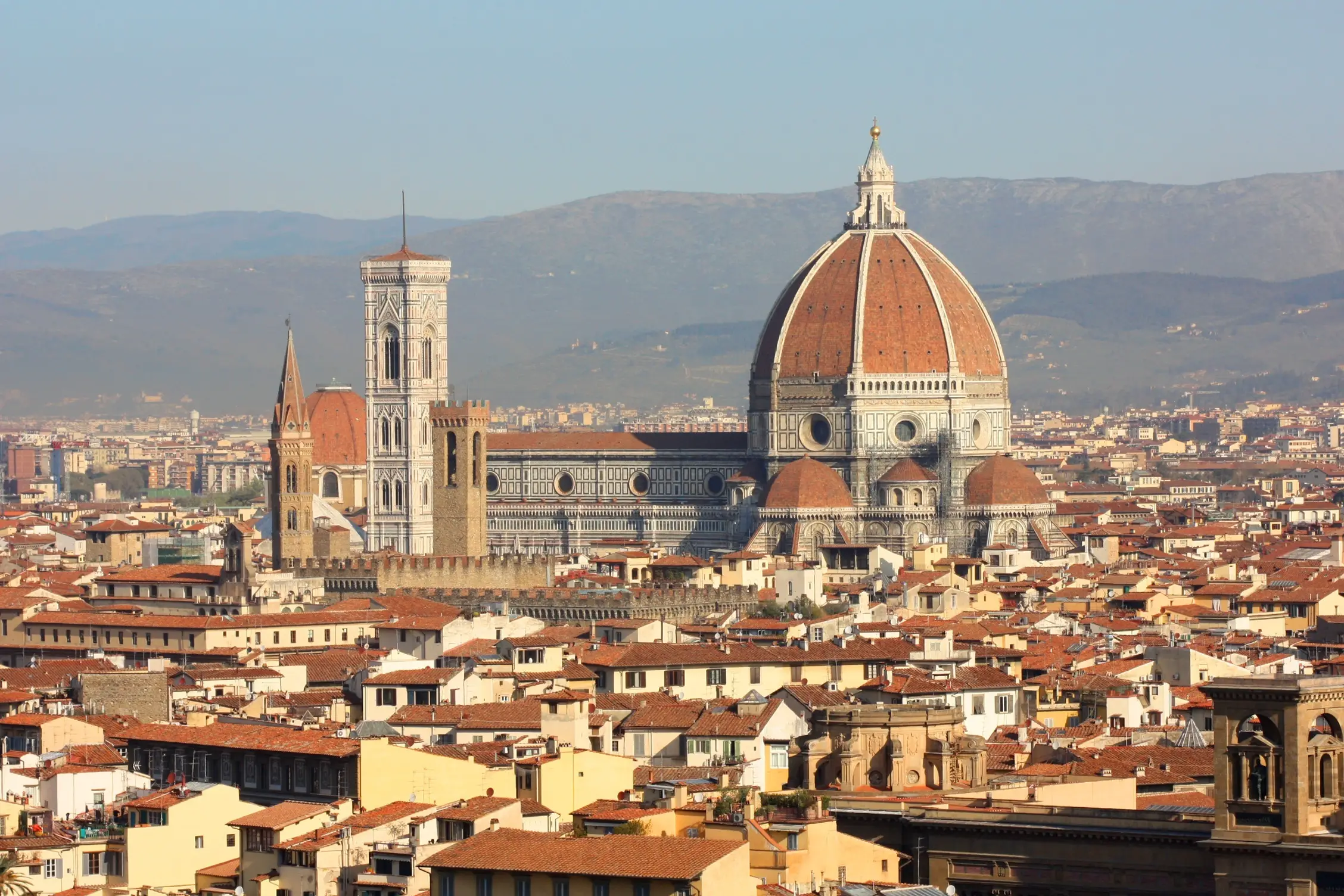
Florence
Culture and history are thick in the air in Florence. Located on the banks of the Arno River in Tuscany, Florence’s past is deeply compelling. The birthplace of the Renaissance, Florence is where innovators like Dante, Machiavelli, Michelangelo, and Da Vinci made their fortunes. Centuries of art, politics, and commerce have left their mark on every stone in this Northern Italian city. In the 15th and 16th centuries, Florentine banks funded new enterprises that went on to change the history of the world. Powerful families like the Medici’s financed some of the finest art in history and pioneered new ways of doing statecraft and politics. As you stand in the Piazzale Michelangelo and gaze upon the city below it’s hard to take it all in at once. It feels like behind every door in Florence might hide a work of genius. Michelangelo’s David and Botticelli’s Primavera can be found just a short walk away. After a long day wandering the streets and gazing at art, fueled by exquisite coffee and gelato, relax like the locals do: with a glass of some of the best wine in the world.

Learn About Florence
Build Florence Trip

Milan
Milan is Italy’s most forward-looking city. An international center for fashion, fine dining, and design, it seems as though Milanese people breathe style. From the gleam on your wine glass to the twists of its cathedral’s spires, everything in Milan is finished to perfection. Home to the Italian stock exchange, a world-famous fashion industry, and a frantic business district, Milan is fast-paced and commercially minded. The shopping in Milan is second to none. At the Galleria Vittorio Emanuele II, one of the world’s oldest shopping malls, a glass-iron ceiling soars over brands like Louis Vuitton, Gucci, Massimo Dutti, and Amani. Along with the fashion, Milan’s cathedral, castle, and canals are also must-sees. But to view the city’s most prized possession - Leonardo da Vinci’s Last Supper, you must make an appointment. Tickets to view this mural sell out weeks in advance. It is truly a bucket-list worthy work of art. After a day taking in all the glamor and culture, take a seat in one of Milan’s well-appointed eateries. The Navigli Quarter is packed with restaurants, bars, and cafes, perfect for a relaxed Aperol spritz or pizza along the city’s canals.

Learn About Milan
Build Milan Trip
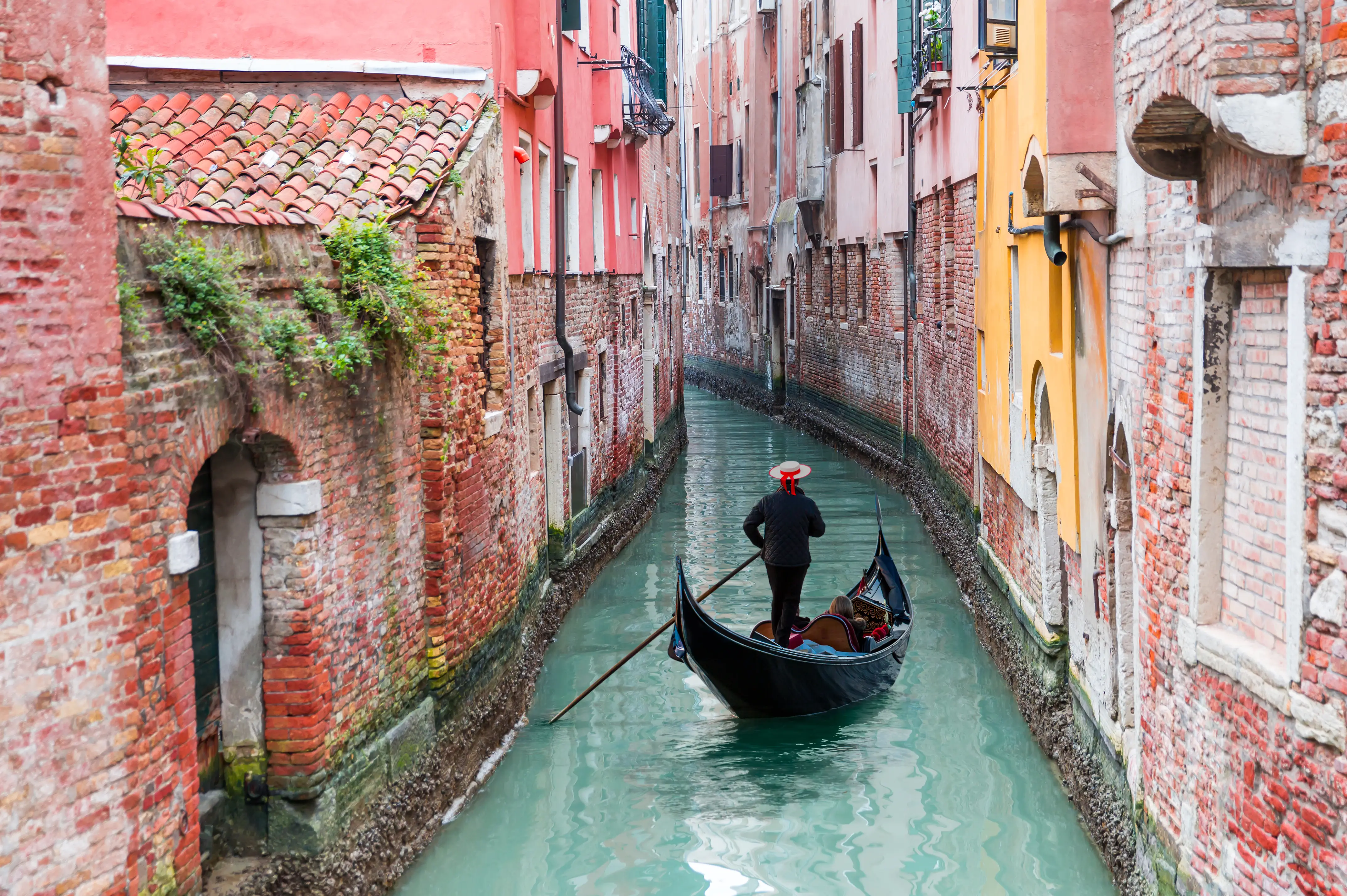
Venice
Venice is a city with no equal. Built on a series of islands on a lagoon, it was once a powerful city-state. Echoes of that old magnificence can be seen everywhere here, from the stunning buildings that rise out of the canals, to the bridges that arc across them. Take a Gondola ride through the canals that form the city’s veins, or wander through the winding streets drinking in the sights. You’ll see Venice attracts tourists in huge numbers, and that’s with good reason. It’s home to a seemingly limitless amount of art, culture, history, and architecture. St Mark’s Basilica, the Doge’s Palace, and the Campanile di San Marco just barely scratch the surface. There’s a 700-year-old market, Rialto, which is still open today. The Ponte di Rialto bridge connects the neighborhoods of San Marco and San Polo, stretching across the Grand Canal. Venice has weathered the last several centuries with elegance and pride, a place that will surpass even your highest expectations.

Learn About Venice
Build Venice Trip
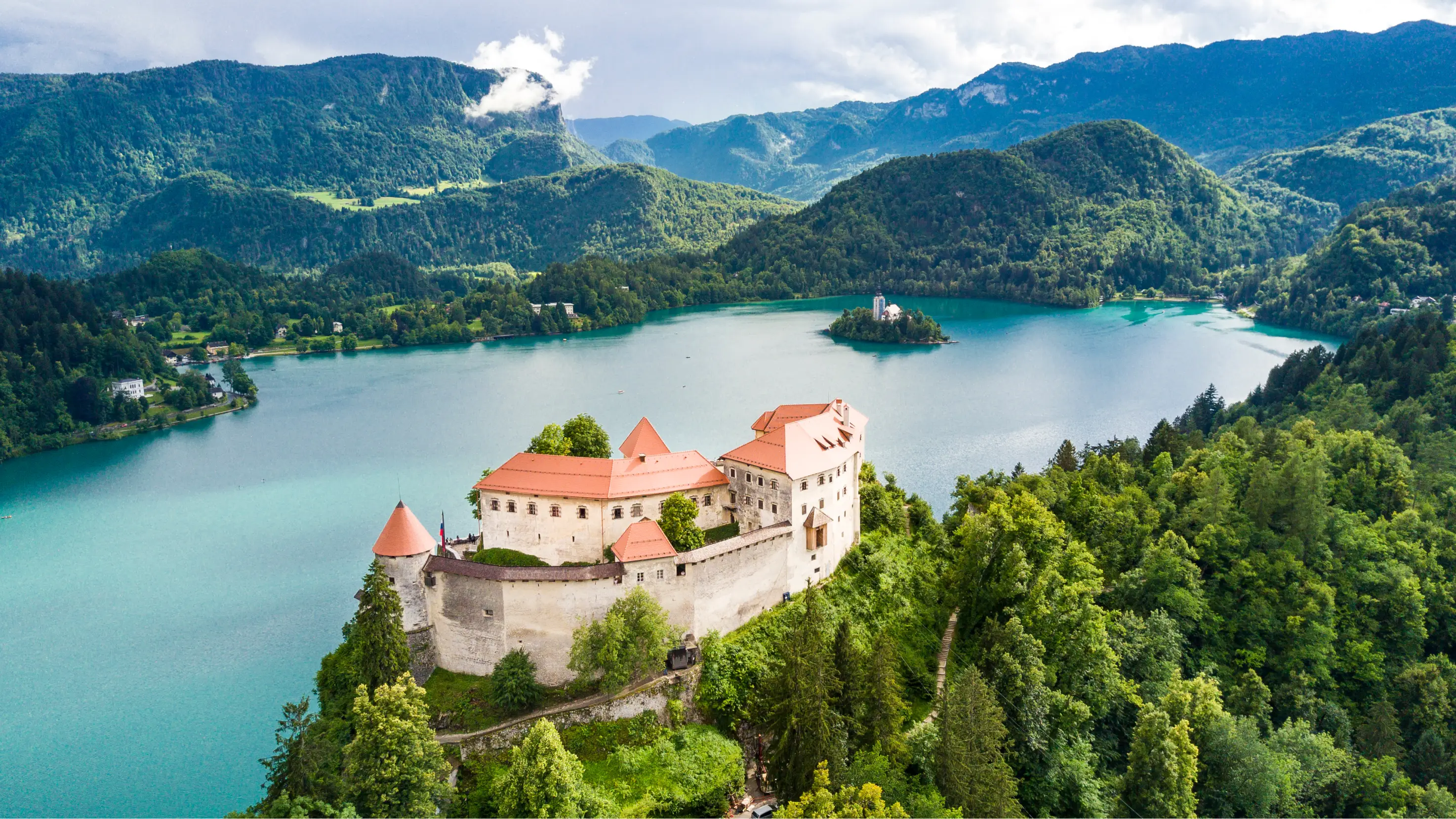
Ljubljana
One of Europe's smallest capitals, Ljubljana is still Slovenia's biggest city. What it lacks in size, though, it more than makes up for in charm, beauty, and personality. It's also one of Europe's greenest cities and is perfect for a bike ride or a leisurely walk. With plenty of open spaces, gorgeous architecture, and cultural treats, it's easy to fill the time here. The Tromostovje, or Triple Bridge, is one of Ljubljana's main attractions, connecting the Old Town with the new. Excellent pizza can be found here, and a series of bars and cafes are dotted throughout the town and along the banks of the river. The anarchic Metelkova City reveals Ljubljana's grittier side, with art exhibitions and performances housed in a disused military barracks. Ljubljana is charm and beauty compressed neatly into a small and pretty space.

Learn About Ljubljana
Build Ljubljana Trip
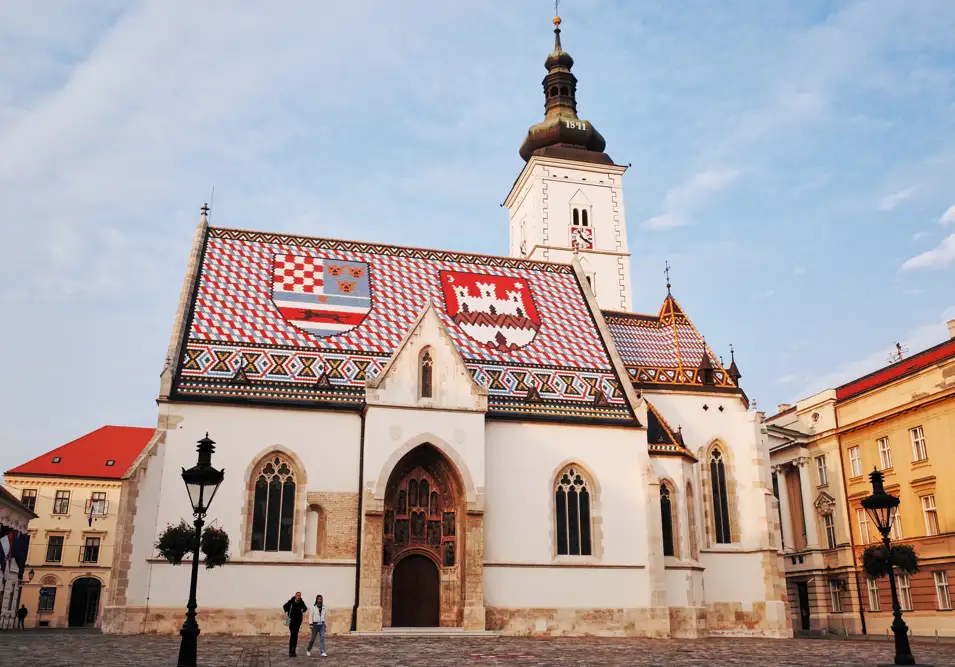
Zagreb
Zagreb is Croatia's biggest city, known for its cultural roots and vibrant street life. The city's rich history is evident in the mix of different architectural styles, including secessionist, classical, neo-Baroque, neo-Gothic, and art deco. Even the seemingly lackluster parts of town have been brought to life by street artists. At first glance, the red rooftops and cobblestone streets might seem reminiscent of other popular European cities, but you'll soon learn that Zagreb has a spirit all its own. Everywhere you go, you'll be rubbing elbows with lively locals hanging out at open cafes, gardens, and parks, or rushing to the next event on the calendar. Thanks to the spacious pedestrian zones attracting locals, expats, and visitors alike, socializing with new people and finding something unexpected to do is effortless. At night, the youth of the city becomes even more exuberant. With plenty of jazz clubs, beer halls, cocktail bars, and casinos, there's always something to do because the city never sleeps.

Learn About Zagreb
Build Zagreb Trip

Rome
One of the must-sees of Italy, and indeed all of Europe, Rome is a city with history flowing through its veins. There is an endless amount to see, do, and learn here, with something for every taste and disposition. Rome was the center of Western civilization for a Millenium and during that time, accumulated a list of historical and cultural treasures that no other destination can truly match. The Pantheon, Colosseum, Roman Forum, and Cirus of Maxentius are just a few examples of what can be seen and experienced in Rome, which at times feels more like a giant outdoor museum than a city. At Rome’s heart, you’ll find the Vatican, home of the Roman Catholic Church and the Pope. Here visitors can see the legendary Sistine Chapel. Transcending a mere building, the chapel is a walk-in work of art. Although historical sights can be found on just about every corner, it’s entirely possible to fill a day just wandering around Rome. The city’s charming streets and open Piazzas are filled with beautiful sights and places to sit, grab the best Cappuccino in the world, and enjoy the view.

Learn About Rome
Build Rome Trip

Florence
Culture and history are thick in the air in Florence. Located on the banks of the Arno River in Tuscany, Florence’s past is deeply compelling. The birthplace of the Renaissance, Florence is where innovators like Dante, Machiavelli, Michelangelo, and Da Vinci made their fortunes. Centuries of art, politics, and commerce have left their mark on every stone in this Northern Italian city. In the 15th and 16th centuries, Florentine banks funded new enterprises that went on to change the history of the world. Powerful families like the Medici’s financed some of the finest art in history and pioneered new ways of doing statecraft and politics. As you stand in the Piazzale Michelangelo and gaze upon the city below it’s hard to take it all in at once. It feels like behind every door in Florence might hide a work of genius. Michelangelo’s David and Botticelli’s Primavera can be found just a short walk away. After a long day wandering the streets and gazing at art, fueled by exquisite coffee and gelato, relax like the locals do: with a glass of some of the best wine in the world.

Learn About Florence
Build Florence Trip

Milan
Milan is Italy’s most forward-looking city. An international center for fashion, fine dining, and design, it seems as though Milanese people breathe style. From the gleam on your wine glass to the twists of its cathedral’s spires, everything in Milan is finished to perfection. Home to the Italian stock exchange, a world-famous fashion industry, and a frantic business district, Milan is fast-paced and commercially minded. The shopping in Milan is second to none. At the Galleria Vittorio Emanuele II, one of the world’s oldest shopping malls, a glass-iron ceiling soars over brands like Louis Vuitton, Gucci, Massimo Dutti, and Amani. Along with the fashion, Milan’s cathedral, castle, and canals are also must-sees. But to view the city’s most prized possession - Leonardo da Vinci’s Last Supper, you must make an appointment. Tickets to view this mural sell out weeks in advance. It is truly a bucket-list worthy work of art. After a day taking in all the glamor and culture, take a seat in one of Milan’s well-appointed eateries. The Navigli Quarter is packed with restaurants, bars, and cafes, perfect for a relaxed Aperol spritz or pizza along the city’s canals.

Learn About Milan
Build Milan Trip

Venice
Venice is a city with no equal. Built on a series of islands on a lagoon, it was once a powerful city-state. Echoes of that old magnificence can be seen everywhere here, from the stunning buildings that rise out of the canals, to the bridges that arc across them. Take a Gondola ride through the canals that form the city’s veins, or wander through the winding streets drinking in the sights. You’ll see Venice attracts tourists in huge numbers, and that’s with good reason. It’s home to a seemingly limitless amount of art, culture, history, and architecture. St Mark’s Basilica, the Doge’s Palace, and the Campanile di San Marco just barely scratch the surface. There’s a 700-year-old market, Rialto, which is still open today. The Ponte di Rialto bridge connects the neighborhoods of San Marco and San Polo, stretching across the Grand Canal. Venice has weathered the last several centuries with elegance and pride, a place that will surpass even your highest expectations.

Learn About Venice
Build Venice Trip

Ljubljana
One of Europe's smallest capitals, Ljubljana is still Slovenia's biggest city. What it lacks in size, though, it more than makes up for in charm, beauty, and personality. It's also one of Europe's greenest cities and is perfect for a bike ride or a leisurely walk. With plenty of open spaces, gorgeous architecture, and cultural treats, it's easy to fill the time here. The Tromostovje, or Triple Bridge, is one of Ljubljana's main attractions, connecting the Old Town with the new. Excellent pizza can be found here, and a series of bars and cafes are dotted throughout the town and along the banks of the river. The anarchic Metelkova City reveals Ljubljana's grittier side, with art exhibitions and performances housed in a disused military barracks. Ljubljana is charm and beauty compressed neatly into a small and pretty space.

Learn About Ljubljana
Build Ljubljana Trip

Zagreb
Zagreb is Croatia's biggest city, known for its cultural roots and vibrant street life. The city's rich history is evident in the mix of different architectural styles, including secessionist, classical, neo-Baroque, neo-Gothic, and art deco. Even the seemingly lackluster parts of town have been brought to life by street artists. At first glance, the red rooftops and cobblestone streets might seem reminiscent of other popular European cities, but you'll soon learn that Zagreb has a spirit all its own. Everywhere you go, you'll be rubbing elbows with lively locals hanging out at open cafes, gardens, and parks, or rushing to the next event on the calendar. Thanks to the spacious pedestrian zones attracting locals, expats, and visitors alike, socializing with new people and finding something unexpected to do is effortless. At night, the youth of the city becomes even more exuberant. With plenty of jazz clubs, beer halls, cocktail bars, and casinos, there's always something to do because the city never sleeps.

Learn About Zagreb
Build Zagreb Trip
prev
next


 Map of Your Itinerary Route
Map of Your Itinerary Route
Zoom In to the cities to see your itinerary in more detail


 4.8
4.8 


